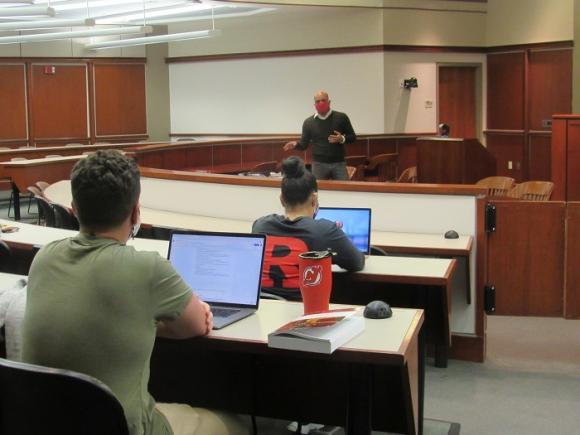The Duty of Aesthetic Aids in Effective Trial Presentations: A Guide for Attorneys
The Duty of Aesthetic Aids in Effective Trial Presentations: A Guide for Attorneys
Blog Article
Browsing the Complexities of Trial Presentations: Tips for Seamless Delivery and Engaging Arguments
In the realm of lawful process, the art of test discussion stands as a vital component of success. As attorneys navigate the detailed web of court dynamics, the ability to perfectly deliver arguments and proof while astounding the court's focus becomes paramount. The intricacies integral in test discussions need a fragile equilibrium of skill, ability, and approach. By refining techniques that ensure a refined delivery and crafting compelling arguments that reverberate with the audience, legal experts can dramatically boost their campaigning for. In a globe where persuasion preponderates, understanding the complexities of trial discussions is not just an alternative however a requirement for those looking for to dominate in the court.

Comprehending Test Objectives
To properly navigate a test, it is critical to have a clear understanding of the goals that need to be accomplished. Prior to entering the court room, legal teams should specify their goals and preferred outcomes. These objectives offer as directing concepts throughout the test, shaping strategies and influencing decision-making procedures.
Comprehending test objectives entails an extensive evaluation of the case, lawful precedents, and the customer's finest interests. Trial Presentations. It needs a careful exam of the realities, determining key problems, and anticipating potential challenges. By setting specific and measurable objectives, attorneys can customize their arguments and presentations to straighten with the preferred results
Additionally, a clear grip of trial objectives allows legal groups to prioritize evidence, witnesses, and lawful disagreements properly. It allows for the advancement of a systematic story that reverberates with the discretionary, reinforcing the general situation presentation.

Organizing Proof Successfully
Having a clear understanding of test objectives lays the structure for organizing evidence properly in lawful process. By lining up the presentation of proof with the desired end results of the test, lawful teams can enhance their disagreements and improve their persuasiveness.
Another key aspect in organizing evidence efficiently is establishing a rational circulation. Presenting proof in a coherent and consecutive fashion can assist construct a compelling story that supports the lawful arguments being made. Furthermore, using visual help such as timelines, graphes, or graphs can even more improve the company of proof and help in clearing up complicated partnerships or series of events.
Furthermore, making sure that all evidence presented is relevant and permissible to the case is crucial. Pointless or inadmissible evidence can interfere with the toughness of the disagreement and possibly harm the reliability of the presenting event. A thorough review and option procedure must be embarked on to consist of just the most impactful and legally sound evidence in the test discussion.
Crafting Convincing Stories
Crafting engaging stories plays an essential role in presenting influential disagreements throughout legal process. A well-crafted story has the power to mesmerize the target market, get redirected here stimulate feelings, and eventually persuade look at this site the choice for the offering party. When building a narrative for a trial presentation, it is vital to establish a clear storyline that highlights bottom lines and links them in a systematic manner. Begin by describing the realities of the situation in an engaging manner, ensuring that the sequence of occasions is simple to follow. Present personalities efficiently, supplying background details that helps the audience recognize their inspirations and activities. Additionally, including dazzling summaries and interesting language can bring the narrative to life, making it extra memorable for the court and court. By weaving together evidence, testimony, and lawful arguments right into a influential and cohesive story, lawful experts can properly advocate for their customers and raise the probability of a beneficial result in the courtroom.
Mastering Visual Help
Reliable usage of visual aids is crucial to boosting the influence and quality of trial presentations. Visual help, when used strategically, have the power to simplify complicated information, reinforce key points, and leave a long lasting perception on the court and jury. To grasp visual aids in trial discussions, it is important to guarantee that they are clear, concise, and appropriate to the debates being made.
When integrating visual help, such as charts, graphs, photos, or timelines, right into a test presentation, it is important to maintain them aesthetically appealing yet professional. The visuals ought to enhance the spoken disagreements, offering a visual click here now representation of the information being reviewed without frustrating the target market with unnecessary details.
Moreover, exercising with the visual help beforehand is crucial to make certain a seamless distribution during the test. Familiarizing oneself with the web content, shifts, and timings of each aesthetic aid can assist maintain the circulation of the presentation and protect against technical glitches that may arise.
Supplying Impactful Closing Disagreements
A compelling closing disagreement serves as the conclusion of a test discussion, encapsulating the core narrative and convincing the discretionary towards a beneficial decision. To supply an impactful closing debate, it is important to succinctly wrap up bottom lines, highlight the staminas of your instance, and address any kind of weaknesses in a tactical manner. Begin by describing the primary arguments that support your customer's setting, emphasizing why the proof presented throughout the trial sustains your narrative. It is necessary to create a feeling of communication and clarity, assisting the discretionary towards the preferred final thought.
Moreover, incorporating emotional charm can additionally strengthen your closing debate. By linking and humanizing the instance on an individual degree with the decision-makers, you can evoke compassion and understanding, affecting their perception of the realities offered. Additionally, stating the legal criteria that need to be satisfied for a beneficial judgment can enhance the legitimacy of your setting. Ultimately, a well-crafted closing disagreement should leave a lasting impact, compelling the judge and court to rule in your client's favor.
Verdict
Finally, mastering test presentations entails comprehending goals, organizing evidence, crafting stories, utilizing aesthetic help, and supplying impactful closing debates. By applying these techniques effectively, lawyers can provide their situation perfectly and make engaging debates in the courtroom. It is crucial to navigate the intricacies of trial presentations with precision and skill to accomplish success in legal proceedings.
By straightening the presentation of proof with the preferred end results of the test, lawful teams can enhance their debates and improve their persuasiveness (Trial Presentations). To understand aesthetic help in trial discussions, it is crucial to make sure that they are clear, succinct, and pertinent to the arguments being made
A compelling closing debate offers as the end result of a trial discussion, enveloping the core story and persuading the judge and jury towards a desirable decision. Begin by laying out the main disagreements that sustain your customer's position, stressing why the proof offered throughout the trial supports your story.In final thought, grasping trial discussions involves comprehending goals, arranging proof, crafting narratives, making use of visual aids, and delivering impactful closing debates.
Report this page